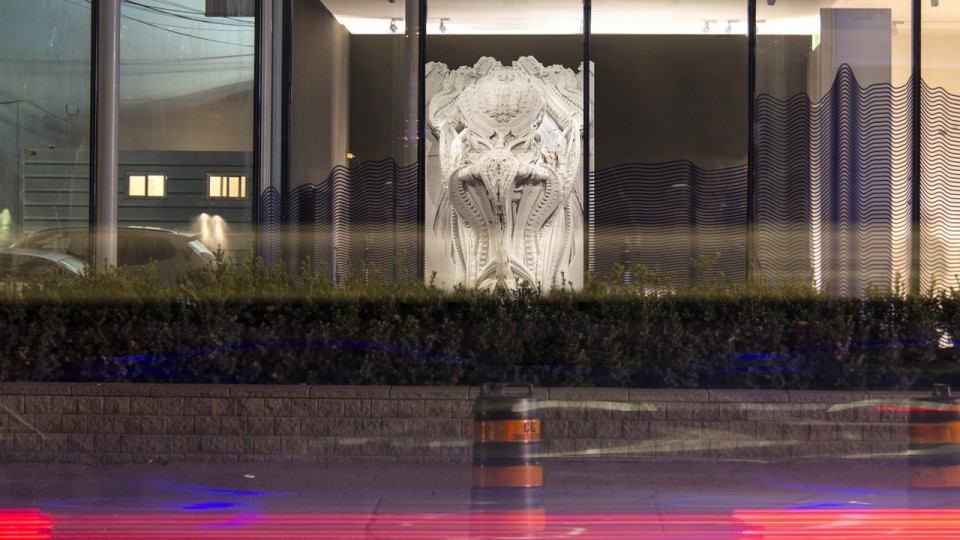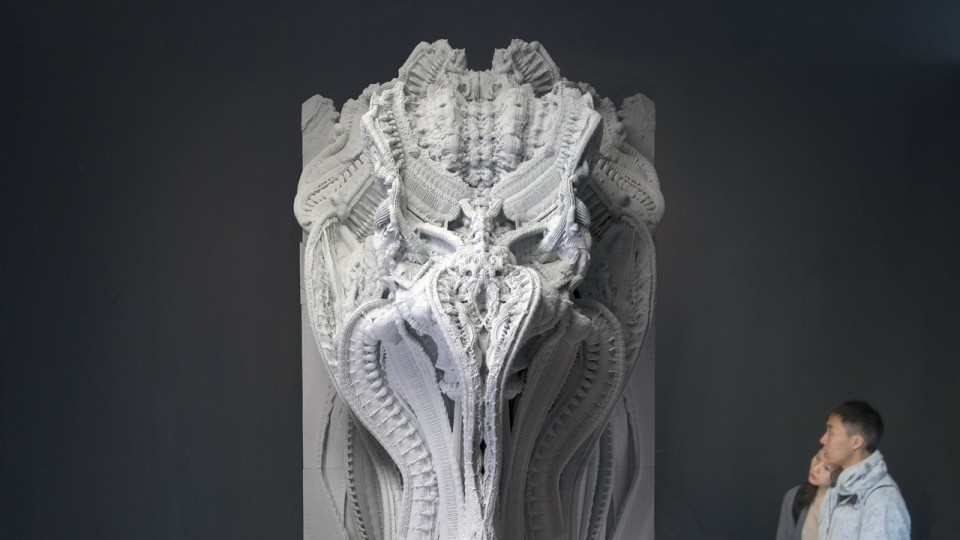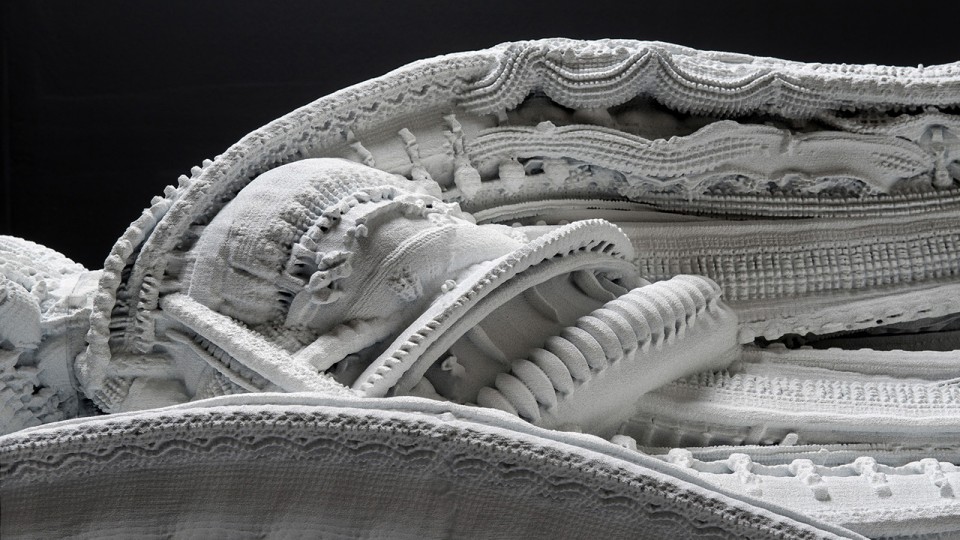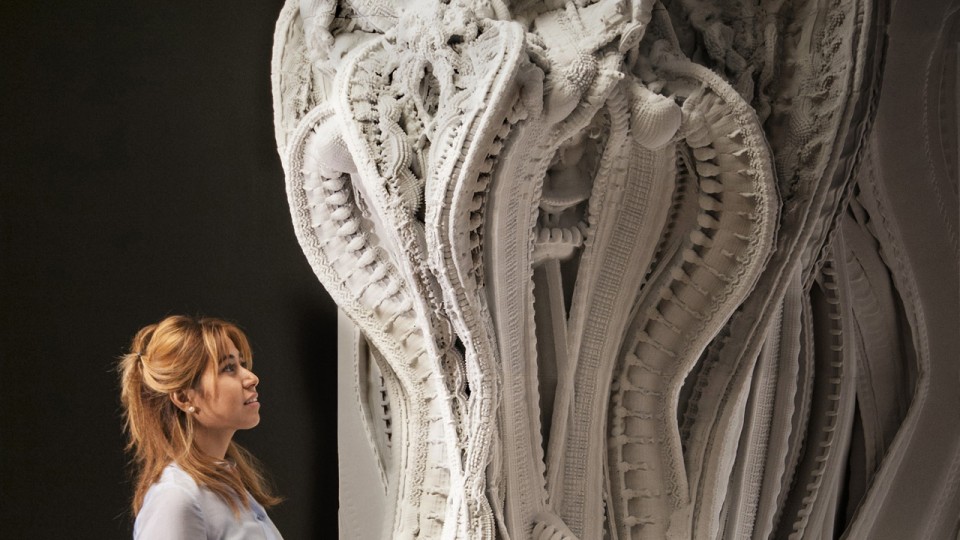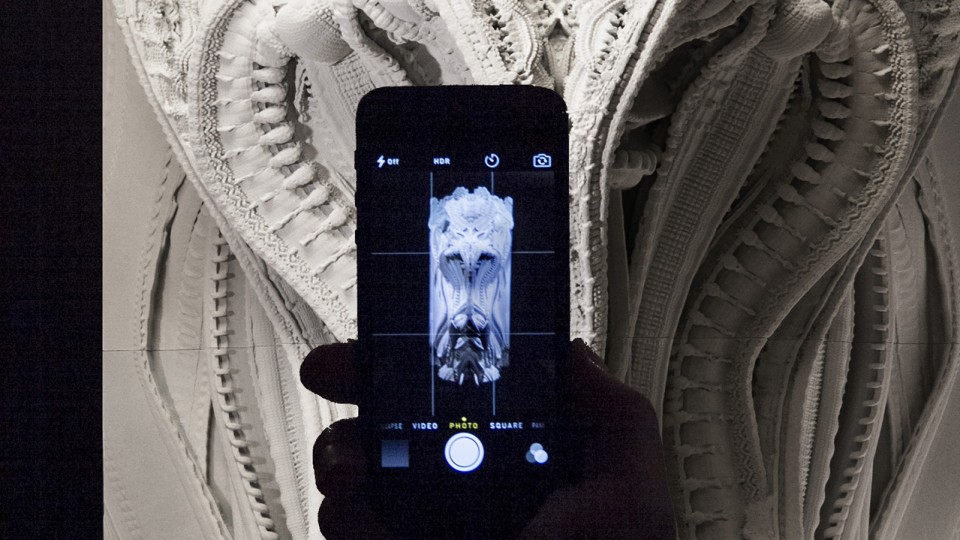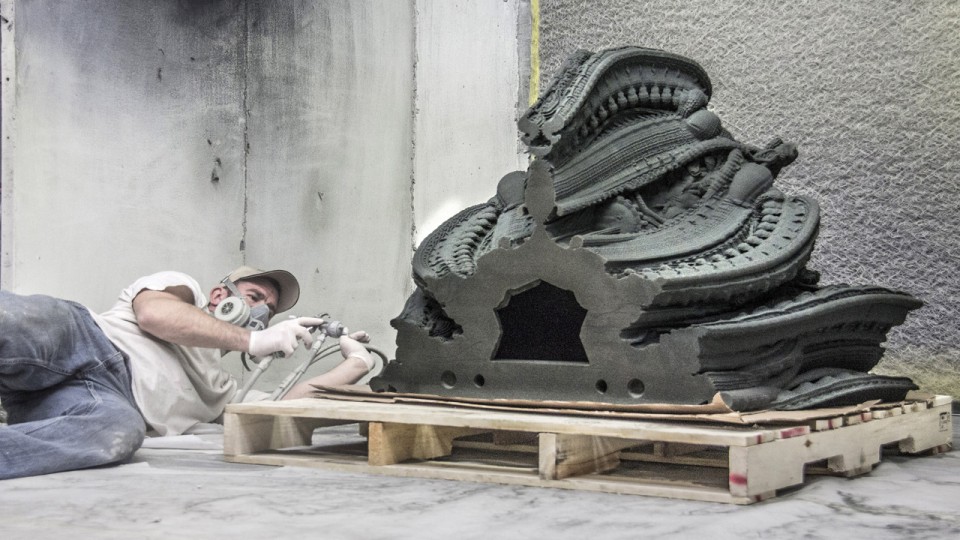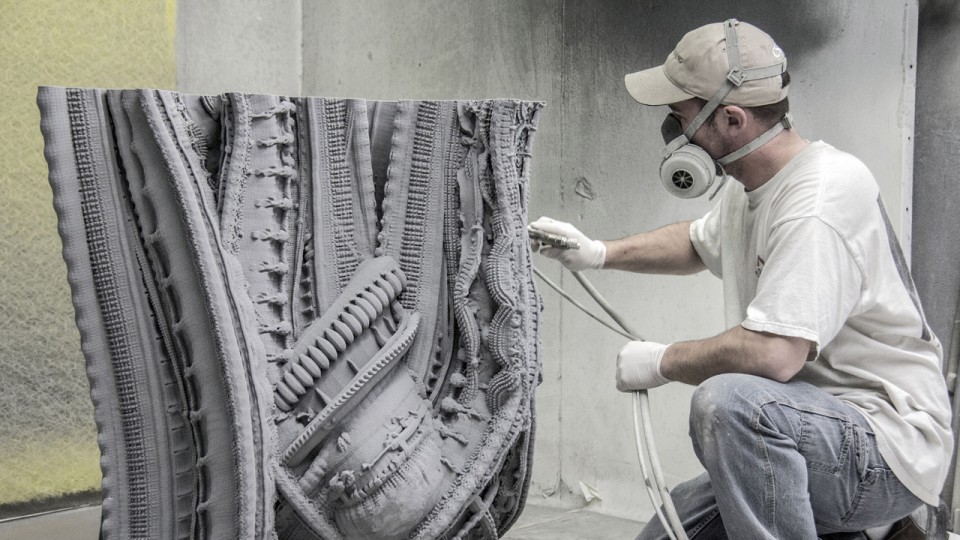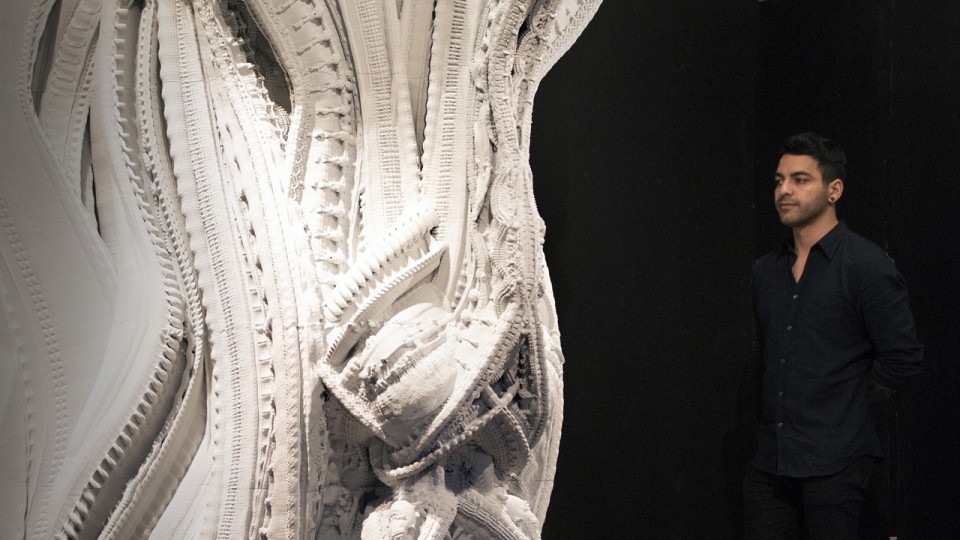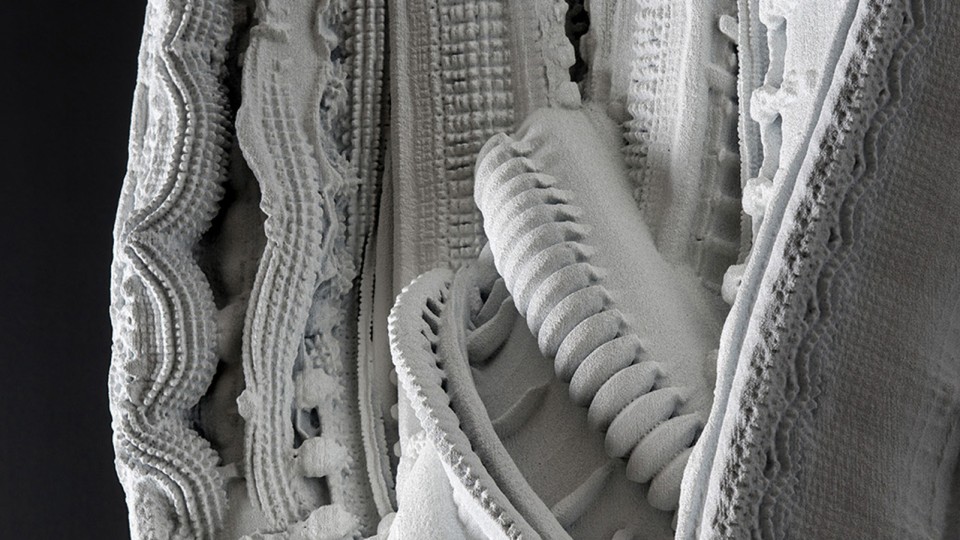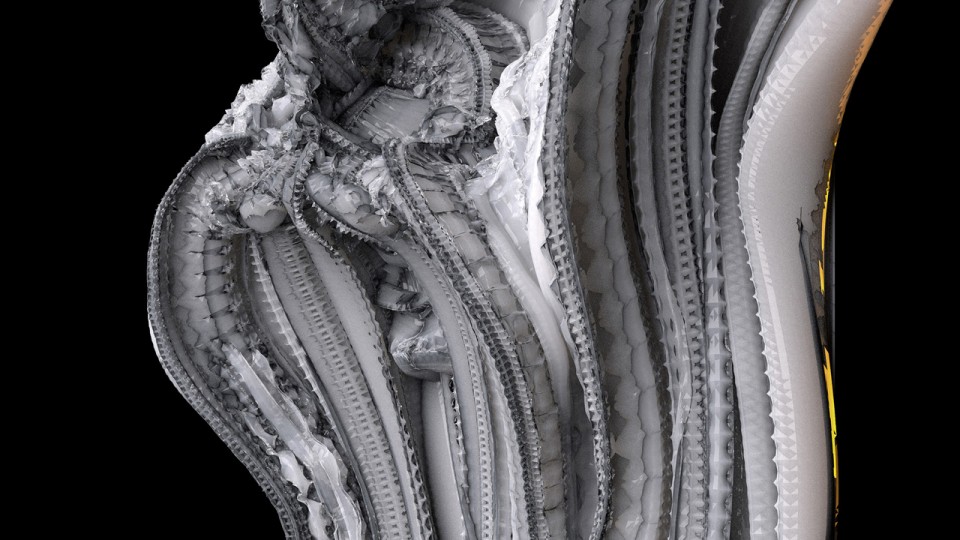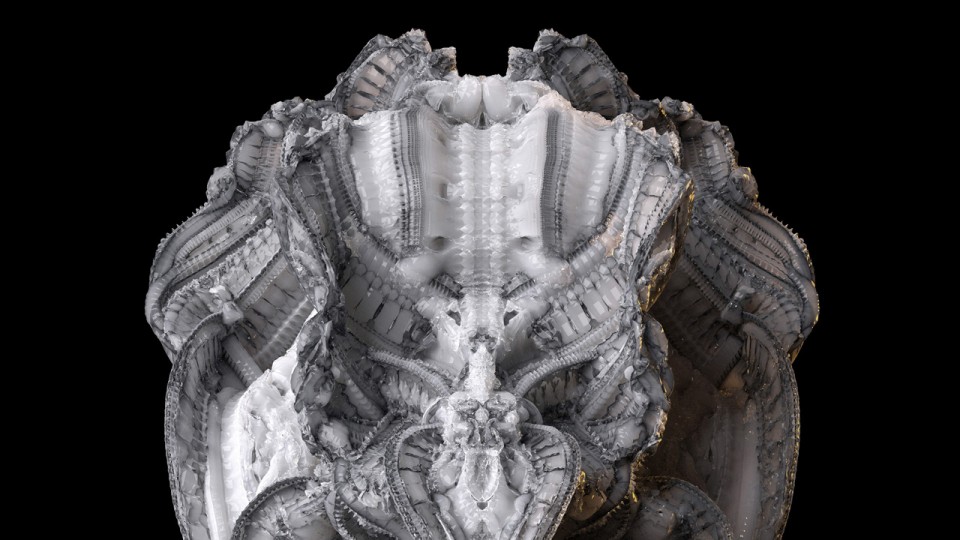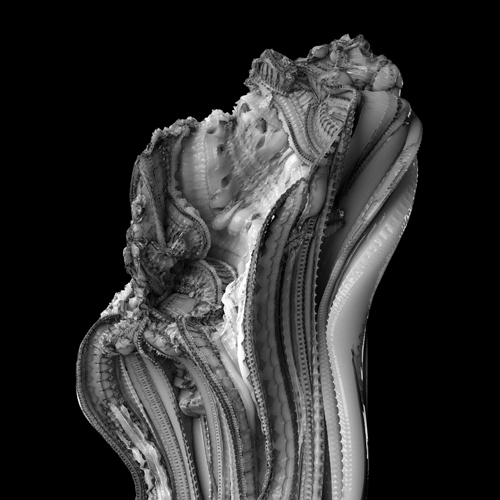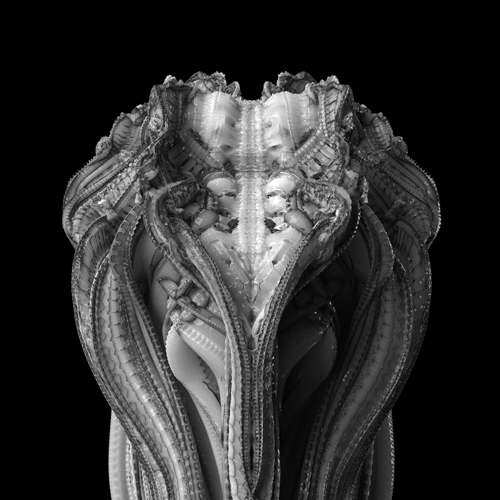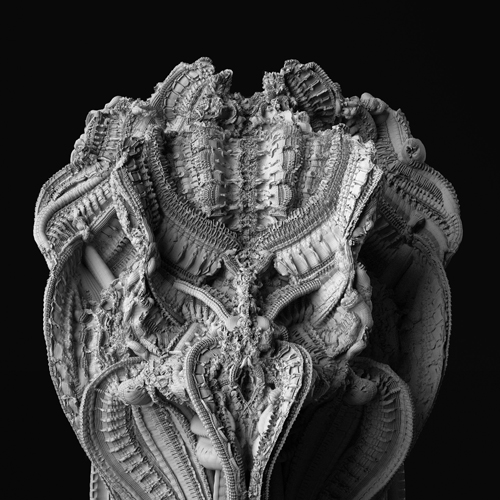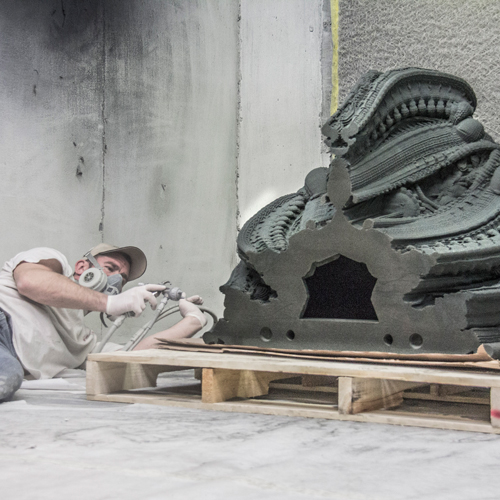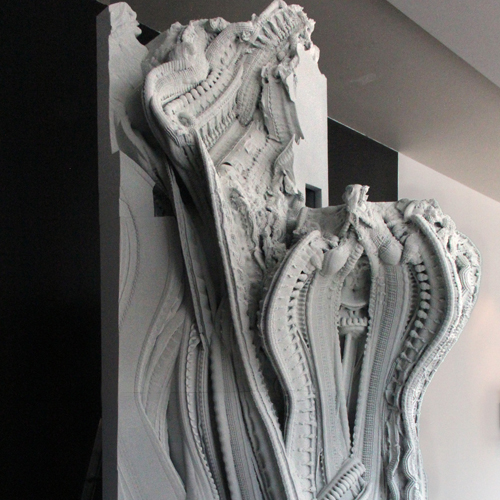Arabesque Wall (2014/2015)
with Michael Hansmeyer
Architecture should surprise, excite, and irritate. As both an intellectual and a phenomenological endeavor, it should address not only the mind, but all the senses – viscerally. It must be judged by the experiences it generates.
The Arabesque Wall was designed and created by Benjamin Dillenburger and Michael Hansmeyer in collaboration with Design Exchange, Toronto for the 3DXL exhibition.
From Sand to Stone
The Arabesque Wall is a massive 3D printed wall with ornamental details down to scale of millimeters. It plays with the aniconic, geometric tradition of arabesque ornaments by creating intricate constellations that are at once figurative and abstract. The Arabesque Wall’s rhythmic, interwoven curve elicit viewers’ individual interpretations and engage viewers to approach it, touch it and to explore. Each perspective offers new impressions.
Arabesque Wall in Figures:
Virtual
• Algorithmically generated geometry
• 200 million surfaces
• 20 billion voxels
• 50 GB production data
Physical
• 12 sand-printed elements (silicate and binder)
• 3 meters (~10 feet) height
• 0.8 tons total weight
• 0.2 mm layer resolution
• 1.7 x 1.0 x 0.7 meter maximum print space
Timeline
• Design development: 4 months
• Fabrication (printing): 4 days
• Assembly: 4 hours
Team
Farzaneh Victoria Fard, John Natanek, Timothy Boll, Paul Kozak, Andrew Lee
Thank you / support
John H. Daniels Faculty of Architecture, University of Toronto
ExOne, Troy, Michigan
Sierra Spray Painting Ltd., Bolton, Ontario
Algorithm
Just as arabesque ornaments, the compositional principles of the Arabesque Wall are both geometric and mathematical. They are based on an iterative tiling and division of a surface. With custom software, these tiles can become microscopic and they can all be completely unique. An algorithm folds a single surface over and over again until a structure composed of millions of individual surfaces emerge. Shifting the design process to this abstract level has a dramatic impact, creating a complexity and richness of detail that would otherwise be almost impossible for a designer to specify or conceive of.
Fabrication
New materials and fabrication methods have historically led to radical changes in architectural design. Today, additive manufacturing promises a design and manufacturing revolution. There is no longer a cost for complexity, nor is there a cost for mass customization. The Arabesque Wall exploits these newfound freedoms to the fullest.
Beyond Rationalisation
In uniquely employing 3D printing for its fabrication, the Arabesque Wall heralds a highly differentiated and spatially complex architecture in which ornament and formal expression cease to be a luxury. It forecasts a one-of-a-kind architecture full of discovery and exuberance. Using computational design and digital fabrication, even the most lavish and complex architecture can now be materialized with relative ease. Freed from fabrication constraints, we can now return to design – we now have the opportunity to redefine what it is we want. The Arabesque Wall thus escapes the paradigms of rationalization and standardization and celebrates architecture as a precious cultural component of our environment.
